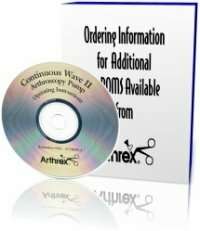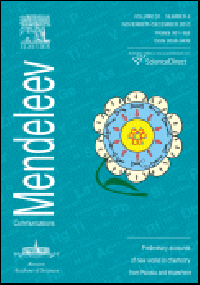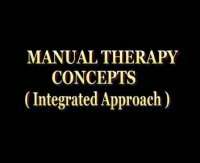
Описание
Lawson:
Exploring the Living World — A Laboratory Manual for Biology
*Notes to Our Readers*
*Acknowledgments, Preface to the Student, How to Write a Lab Report*
*Investigations*
*How Can a Burning Candle Cause Water to Rise?*
*What Types of Molecules Do We Consume?*
*What Microscopic Differences Exist Between Living and Nonliving Things?*
*What Does Cell Structure Imply About Function?*
*What Structures Are Found in Cells?*
*What Initiates the Chemical Breakdown of Food?*
*What Happens When Hydrogen Peroxide and Liver Molecules Are Mixed?*
*What Causes Molecules to Move?*
*What Variables Affect the Passage of Molecules Through Cell Membranes?*
*What Is the Energy Source of Growing Plants?*
*What Gases Do Living Cells Take in and Expel?*
*What Variables Affect the Rate of Photosynthesis?*
*Is Cholorophyll Needed for Sustained Plant Growth and Development?*
*What Happens to Cells When Multicellular Organisms Grow?*
*What Causes Intraspecific Variation?*
*What Determines Specific Characteristics in Fruit Flies?*
*What Is the Chemical Nature of Genes?*
*What Happens During Embryological Development?*
*What Do Fossils Tell Us About Life in the Past?*
*Have Homo sapiens Existed for a Relatively Long Time?*
*How Do Species Evolve?*
*How Can Organisms Be Classified?*
*What Causes the Breakdown of Dead Organisms?*
*What Do Decomposers Come From?*
*What Is Inside a Squid?*
*What Can Be Inferred from Animal Structure?*
*Which Human Characteristics Covary?*
*What Is Inside a Fetal Pig?*
*What Variables Affect Heart Rate?*
*What Are the Structure and Function of Leaf Tissues?*
*How Does Water Rise in Vascular Plants?*
*How Do Flowering Plants Reproduce?*
*What Are the Structure and Function of Fruits?*
*What Is the Energy Source for Germinating Seeds?*
*What Is Inside the Fuzzy Ball?*
*Does Salt Concentration Affect the Hatching of Brine Shrimp Eggs?*
*What Causes Populations to Increase and Decrease?*
*What Kinds of Organisms Live in Temporary Ponds?*
*How Does the Environment Affect the Distribution of Organisms?*
*How Smart Are Animals?*
*Appendixes*
*Appendix: The Nature of Scientific Reasoning*
*Appendix: How to Use a Compound Microscope*
*Glossary*
*Glossary of Key Scientific Terms*
Lewis-Gaffin-Hoefnagels-Parker:
Life, Fifth Edition
*Front Matter*
*Preface*
*I. From Atoms to Cells*
*1. What Is Life?*
*2. The Chemistry of Life*
*3. Cells*
*4. The Cell Surface and Cytoskeleton*
*5. The Energy of Life*
*6. Photosynthesis*
*7. How Cells Release Energy*
*II. Genetics and Biotechnology*
*8. The Cell Cycle*
*9. Meiosis*
*10. How Inherited Traits Are Transmitted*
*11. Chromosomes*
*12. DNA Structure and Replication*
*13. Gene Function*
*III. Evolution*
*14. The Evolution of Evolutionary Thought*
*15. The Forces of Evolutionary Change Ч Microevolution*
*16. Speciation and Extinction*
*17. Evidence of Evolution*
*18. The Origin and History of Life*
*IV. The Diversity of Life*
*19. Viruses*
*20. Bacteria and Archaea*
*21. Protista*
*22. Plantae*
*23. Fungi*
*24. Animalia I Ч Sponges Through Echinoderms*
*25. Animalia II Ч The Chordates*
*V. Plant Life*
*26. Plant form and Function*
*27. Plant Nutrition and Transport*
*28. Reproduction of Flowering Plants*
*29. Plant Responses to Stimuli*
*VI. Animal Life*
*30. Animal Tissues and Organ Systems*
*31. The Nervous System*
*32. The Senses*
*33. The Endocrine System*
*34. The Musculoskeletal System*
*35. The Circulatory System*
*36. The Respiratory System*
*37. Digestion and Nutrition*
*38. Regulation of Temperature and Body Fluids*
*39. The Immune System*
*40. Human Reproduction and Development*
*VII. Behavior and Ecology*
*41. Animal Behavior*
*42. Populations*
*43. Communities and Ecosystems*
*44. Biomes and Aquatic Ecosystems*
*45. Environmental Challenges*
*Back Matter*
*Appendix A: Units of Measurement*
*Appendix B: Periodic Table of Elements*
*Appendix C: Amino Acid Structures*
*Appendix D: Taxonomy*
*Appendix E. Answers to Genetics Problems*
*Glossary*
*Credits*
*Index*
Lombard:
Hands on Biology
*12. Environmental Biology*
Mader:
Human Biology Laboratory Manual, Seventh Edition
*Front Matter*
*Preface*
*Laboratory Safety*
*1. Scientific Method*
*2. Metric Measurement and Microscopy*
*3. Chemical Composition of Cells*
*4. Cell Structure and Function*
*5. Human Body Tissues*
*6. Basic Mammalian Anatomy I*
*7. Chemical Aspects of Digestion*
*8. Energy Requirements and Ideal Weight*
*9. Cardiovascular System*
*10. Features of the Cardiovascular System*
*11. Basic Mammalian Anatomy II*
*12. Homeostasis*
*13. Musculoskeletal System*
*14. Nervous System and Senses*
*15. Human Development*
*16. Mitosis and Meiosis*
*17. Human Genetics*
*18. DNA and Biotechnology*
*19. Human Evolution*
*20. Effects of Pollution*
*Back Matter*
*Appendix: Metric System*
*Practical Examination Answer Sheet*
*Credits*
*Index*
Mader:
Human Biology, Seventh Edition
*Front Matter*
***Readings*
***Preface*
***1. A Human Perspective*
*I. Human Organization*
***2. Chemistry of Life*
***3. Cell Structure and Function*
***4. Organization and Regulation of Body Systems*
*II. Maintenance of the Human Body*
***5. Digestive System and Nutrition*
***6. Composition and Function of the Blood*
***7. Cardiovascular System*
***8. Lymphatic and Immune Systems*
***9. Respiratory System*
***10. Urinary System and Excretion*
*III. Movement and Support in Humans*
***11. Skeletal System*
***12. Muscular System*
*IV. Integration and Coordination in Humans*
***13. Nervous System*
***14. Senses*
***15. Endocrine System*
*V. Reproduction in Humans*
***16. Reproductive System*
***17. Sexually Transmitted Diseases*
***AIDS Supplement*
***18. Development and Aging*
*VI. Human Genetics*
***19. Chromosomal Inheritance*
***20. Genes and Medical Genetics*
***21. DNA and Biotechnology*
***22. Cancer*
*VII. Human Evolution and Ecology*
***23. Human Evolution*
***24. Ecosystems and Human Interferences*
***25. Conservation of Biodiversity*
*Back Matter*
***Appendix A: Answer Key*
***Appendix B: Metric System*
***Appendix C: Periodic Table of Elements*
***Appendix D: Drugs of Abuse*
***Appendix E: Selected Types of Cancer*
***Appendix F: Acronyms*
***Glossary*
***Credits*
***Index*
Mader:
Inquiry Into Life, Tenth Edition
*Front Matter*
*Readings*
*Preface*
*Guided Tour*
*1. The Study of Life*
*I. Cell Biology*
*2. The Molecules of Cells*
*3. Cell Structure and Function*
*4. Membrane Structure and Function*
*5. Cell Division*
*6. Metabolism: Energy and Enzymes*
*7. Cellular Respiration*
*II. Plant Biology*
*8. Photosynthesis*
*9. Plant Organization*
*10. Plant Reproduction, Growth, and Development*
*III. Maintenance of the Human Body*
*11. Human Organization*
*12. Digestive System and Nutrition*
*13. Cardiovascular System*
*14. Lymphatic and Immune Systems*
*15. Respiratory System*
*16. Urinary System and Excretion*
*IV. Integration and Control of the Human Body*
*17. Nervous System*
*18. Senses*
*19. Musculoskeletal System*
*20. Endocrine System*
*V. Continuance of the Species*
*21. Reproductive System*
*22. Development and Aging*
*23. Patterns of Gene Inheritance*
*24. Patterns of Chromosome Inheritance*
*25. Molecular Basis of Inheritance*
*26. Biotechnology*
*VI. Evolution and Diversity*
*27. Evolution of Life*
*28. Microbiology*
*29. Plants*
*30. Animals: Part I*
*31. Animals: Part II*
*VII. Behavior and Ecology*
*32. Animal Behavior*
*33. Population Growth and Regulation*
*34. Ecosystems and Human Interferences*
*35. The Biosphere*
*36. Conservation of Biodiversity*
*End Matter*
*Appendix A: Answer Key*
*Appendix B: Classification of Organisms*
*Appendix C: Metric System*
*Appendix D: Periodic Table of Elements*
*Glossary*
*Credits*
*Index*
Raven-Johnson-Singer-Losos:
Biology, Sixth Edition
*Front Material*
***Preface*
***A Guide to the Learning System*
*I. The Origin of Living Things*
***Introduction*
***1.The Science of Biology*
***2. The Nature of Molecules*
***3. The Chemical Building Blocks of Life*
***4. The Origin and Early History of Life*
*II. Biology of the Cell*
***Introduction*
***5. Cell Structure*
***6. Membranes*
***7. Cell-Cell Interactions*
*III. Energetics*
***Introduction*
***8. Energy and Metabolism*
***9. How Cells Harvest Energy*
***10. Photosynthesis*
*IV. Reproduction and Heredity*
***Introduction*
***11. How Cells Divide*
***12. Sexual Reproduction and Meiosis*
***13. Patterns of Inheritance*
*V. Molecular Genetics*
***Introduction*
***14. DNA: The Genetic Material*
***15. Genes and How They Work*
***16. Control of Gene Expression*
***17. Cellular Mechanisms of Development*
***18. Altering the Genetic Message*
***19. Gene Technology*
*VI. Evolution*
***Introduction*
***20. Genes within Populations*
***21. The Evidence for Evolution*
***22. The Origin of Species*
***23. How Humans Evolved*
*VII. Ecology and Behavior*
***Introduction*
***24. Population Ecology*
***25. Community Ecology*
***26. Animal Behavior*
***27. Behavioral Ecology*
*VIII. The Global Environment*
***Introduction*
***28. Dynamics of Ecosystems*
***29. The Biosphere*
***30. The Future of the Biosphere*
***31. Conservation Biology*
*IX. Viruses and Simple Organisms*
***Introduction*
***32. How We Classify Organisms*
***33. Viruses*
***34. Bacteria*
***35. Protists*
***36. Fungi*
*X. Plant Form and Function*
***Introduction*
***37. Evolutionary History of Plants*
***38. The Plant Body*
***39. Nutrition and Transport in Plants*
*XI. Plant Growth and Reproduction*
***Introduction*
***40. Early Plant Development*
***41. How Plants Grow in Response to Their Environments*
***42. Plant Reproduction*
***43. Plant Genomics*
*XII. Animal Diversity*
***Introduction*
***44. The Noncoelomate Animals*
***45. Mollusks and Annelids*
***46. Arthropods*
***47. Echinoderms*
***48. Vertebrates*
*XIII. Animal Form and Function*
***Introduction*
***49. Organization of the Animal Body*
***50. Locomotion*
***51. Fueling Body Activities: Digestion*
***52. Circulation*
***53. Respiration*
*XIV. Regulating the Animal Body*
***Introduction*
***54. The Nervous System*
***55. Sensory System*
***56. The Endocrine System*
***57. The Immune System*
***58. Maintaining the Internal Environment*
***59. Sex and Reproduction*
***60. Vertebrate Development*
*Back Material*
***Appendix: Classification of Organisms*
***Glossary*
***Credits*
***Index*





